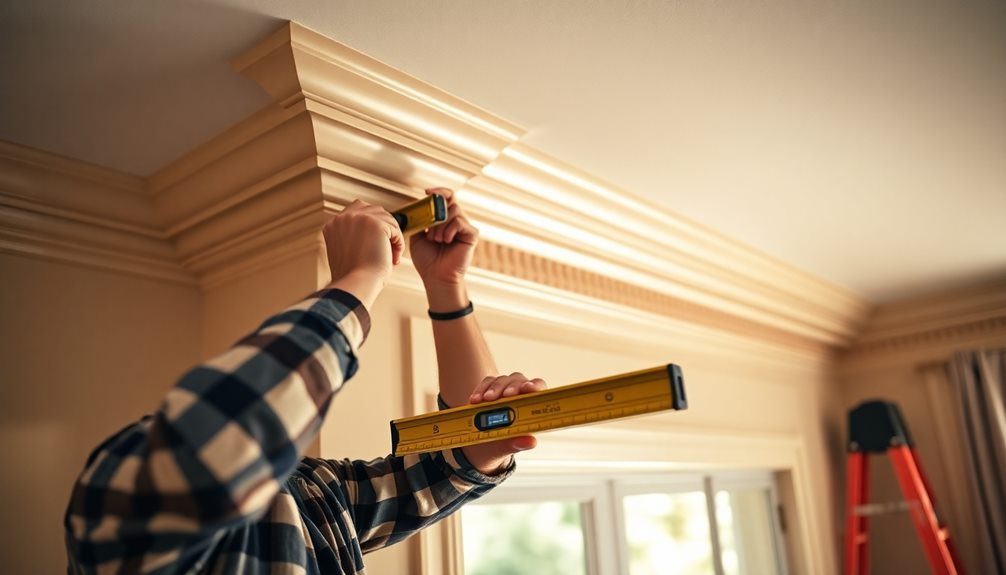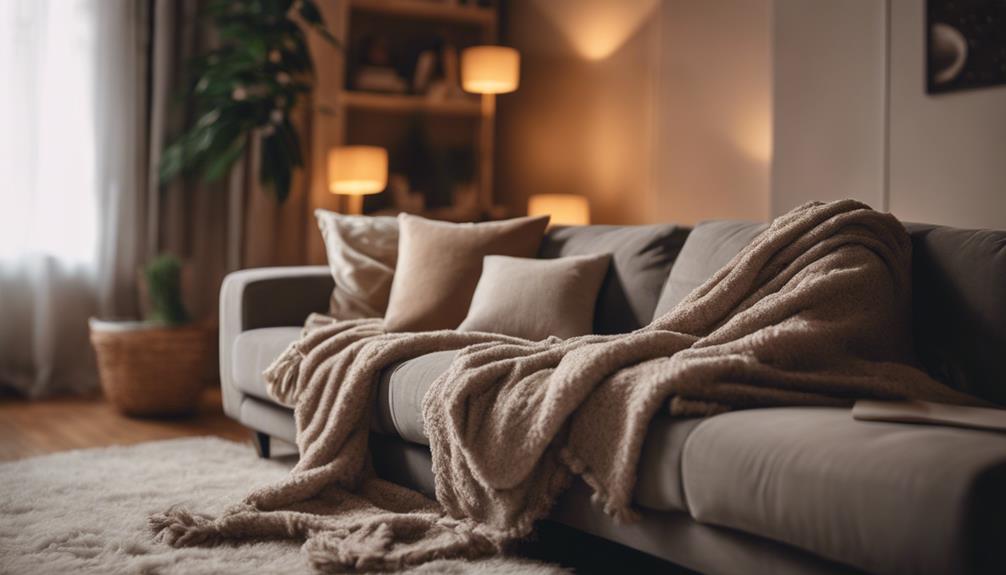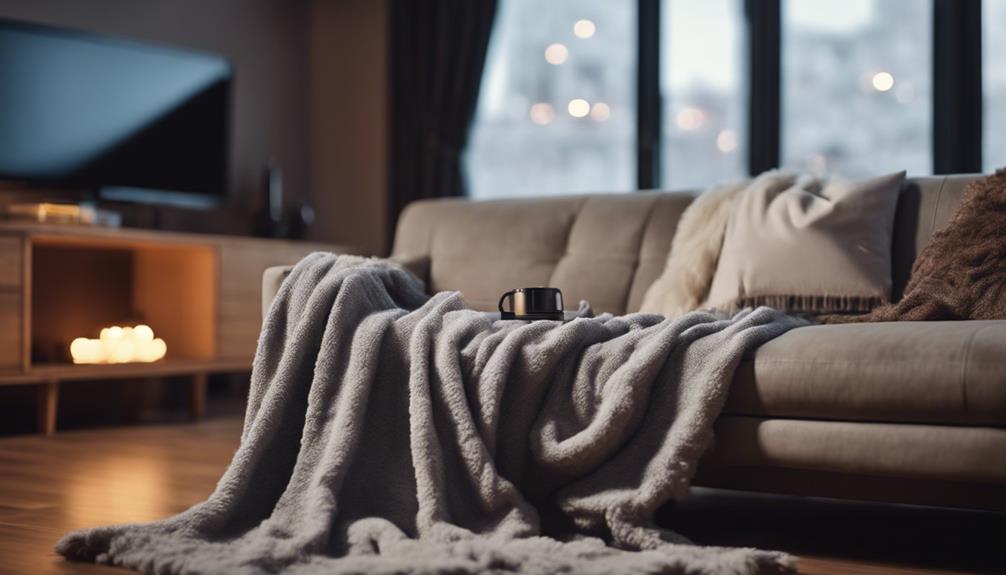Electric throw blankets are safe when used correctly. They come with auto-shutoff timers and temperature control for added safety. Make sure to regularly inspect them for any damage to ensure they function properly and avoid any potential hazards. To prevent overheating, it is important to use them according to the manufacturer’s guidelines. Be sure to spread the blanket evenly for consistent heating and avoid folding it to prevent overheating. Keep the temperature set to a comfortable range, ideally between 70-75 degrees Fahrenheit. Remember to turn off the blanket when not in use to reduce any risks. For more important information on electric throw blanket safety and usage, refer to the provided resources.
Key Takeaways
- Electric throw blankets have safety features like auto-shutoff timers.
- Proper usage guidelines include avoiding folding or bunching up the blanket.
- Safe temperature settings range from 70-75°F to prevent overheating.
- Regular care and maintenance ensure safe and effective use.
- Follow manufacturer's instructions and safety precautions diligently.
Understanding Electric Throw Blanket Safety
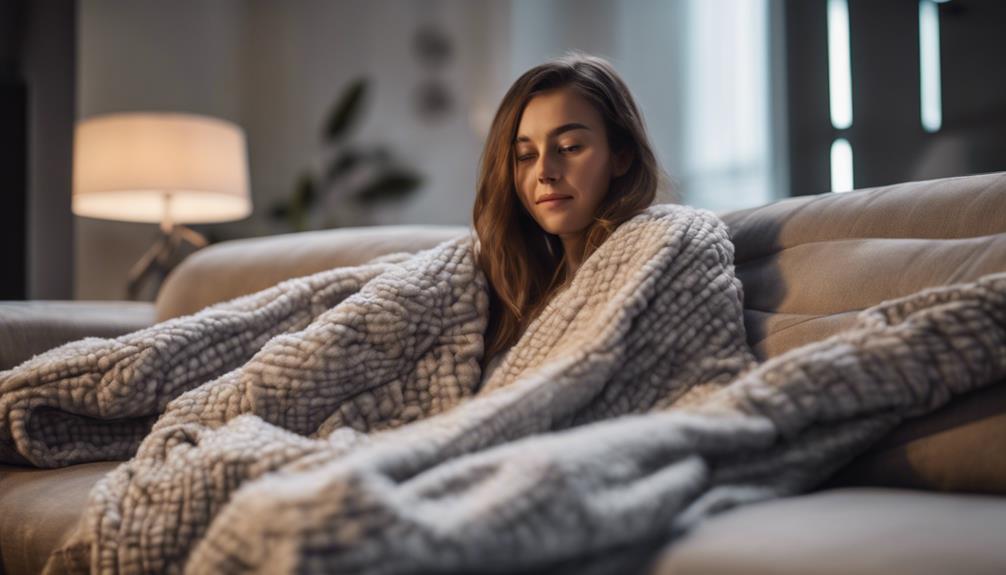
Ensuring the proper use and maintenance of electric throw blankets is vital for safety. Electric throw blankets come equipped with safety features such as auto-shutoff timers and temperature control to prevent overheating. These features play a significant role in maintaining a safe heating environment. It's important to regularly inspect electric blankets for any damage to make sure they function properly and safely. Additionally, avoiding misuse, such as placing heavy items on top of the blanket, can help prevent overheating and potential hazards.
Environmental conditions can also impact the safe use of electric throw blankets. It's recommended to use these blankets in a safe and suitable environment to avoid any safety risks. By following safety guidelines and proper maintenance routines, individuals can enjoy the comfort and warmth of electric throw blankets without compromising their safety. Remember, safety always comes first when using electric blankets.
Proper Usage Guidelines for Electric Throw Blankets
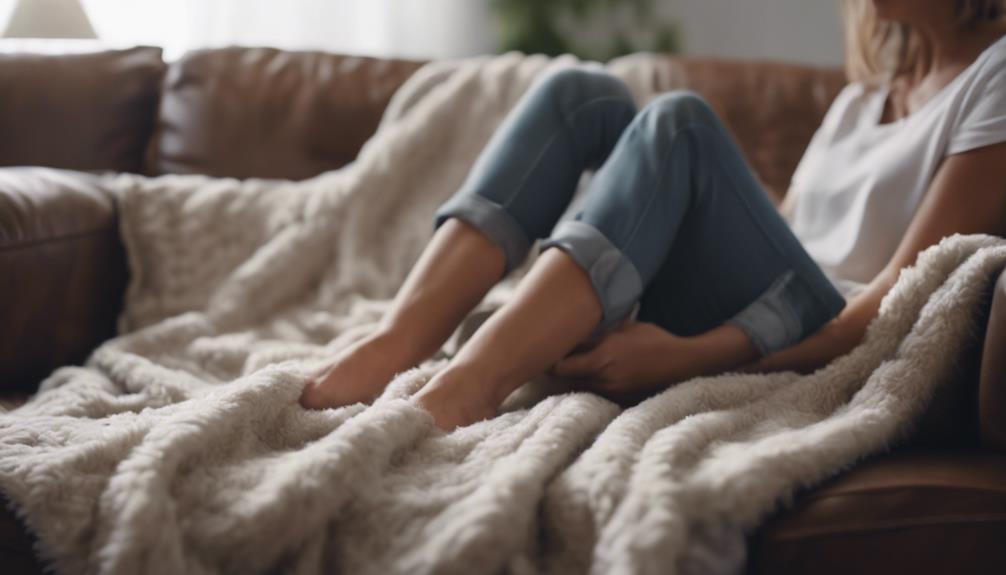
When using electric throw blankets, it's crucial to always adhere to the manufacturer's guidelines for safe operation.
Avoid folding or bunching up the blanket to prevent potential overheating or damage to the internal wiring.
Make sure to spread the blanket out evenly to maintain uniform heating and prevent any hot spots from developing.
Safe Temperature Settings
To maximize safety when using electric throw blankets, it's important to set the temperature to a comfortable range, typically around 70-75°F, to prevent overheating. Using the lowest effective heat setting can help reduce the risk of burns or overheating.
It's vital to avoid leaving electric throw blankets on for extended periods, especially when sleeping, to maintain safe operation. Check the blanket regularly for any signs of damage or malfunction to guarantee safe usage.
Following the manufacturer's guidelines for recommended temperature settings and duration of use is essential for the safe operation of electric blankets. By adhering to these guidelines and maintaining comfortable temperature settings, you can enjoy the warmth of electric throw blankets while prioritizing safety.
Care and Maintenance
For maintaining the safety and longevity of your electric throw blanket, always follow the manufacturer's care instructions for cleaning and maintenance. Avoid folding or bunching up the blanket to prevent damage to the wiring.
When not in use, store it in a dry, cool location to maintain its quality and safety. Regularly inspect the blanket for any signs of wear, fraying, or exposed wires to guarantee safe usage.
Proper care and maintenance are essential for the blanket to provide warmth and comfort effectively. Following these care instructions will help you enjoy your electric throw blanket safely and prolong its lifespan.
Potential Risks of Electric Throw Blankets
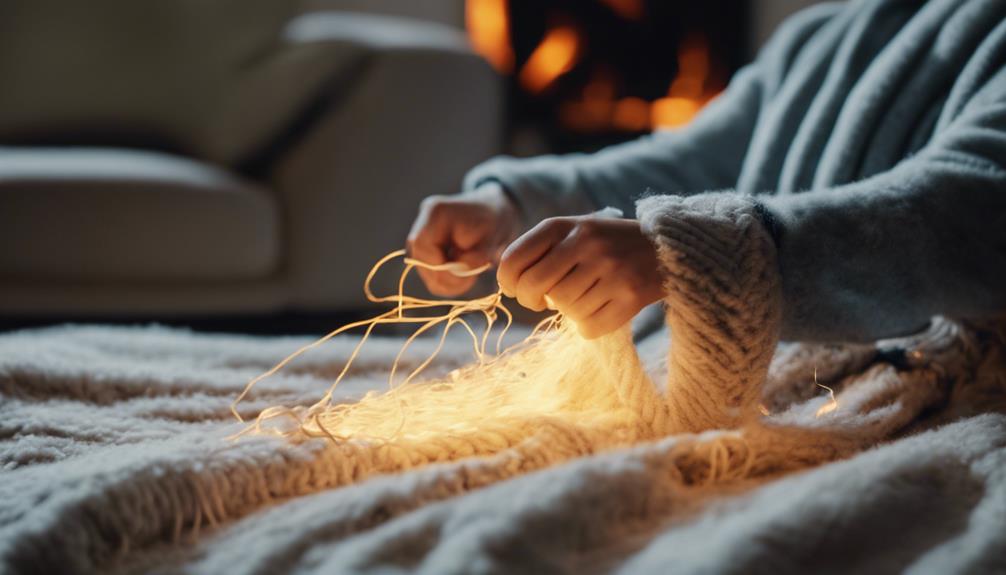
Taking essential precautions is vital when considering the potential risks of using electric throw blankets. These blankets contain heating elements that, if damaged or misused, can pose a fire hazard or lead to overheating, potentially causing burns. To keep your electric blanket safe, it's important to follow safety guidelines and regularly inspect it for any signs of wear, exposed wires, or malfunctions. Adhering to the manufacturer's instructions for regular maintenance is key to minimizing these potential risks.
One common mistake to avoid is folding the electric blanket when in use, as this can damage the heating elements and increase the risk of overheating. By turning off the blanket when not in use and following proper care practices, such as avoiding folding and inspecting for any issues, you can help ensure the safety of using electric throw blankets. Remember, staying vigilant and proactive in maintaining your electric blanket is essential for a safe and cozy experience.
Safety Precautions for Electric Throw Blankets
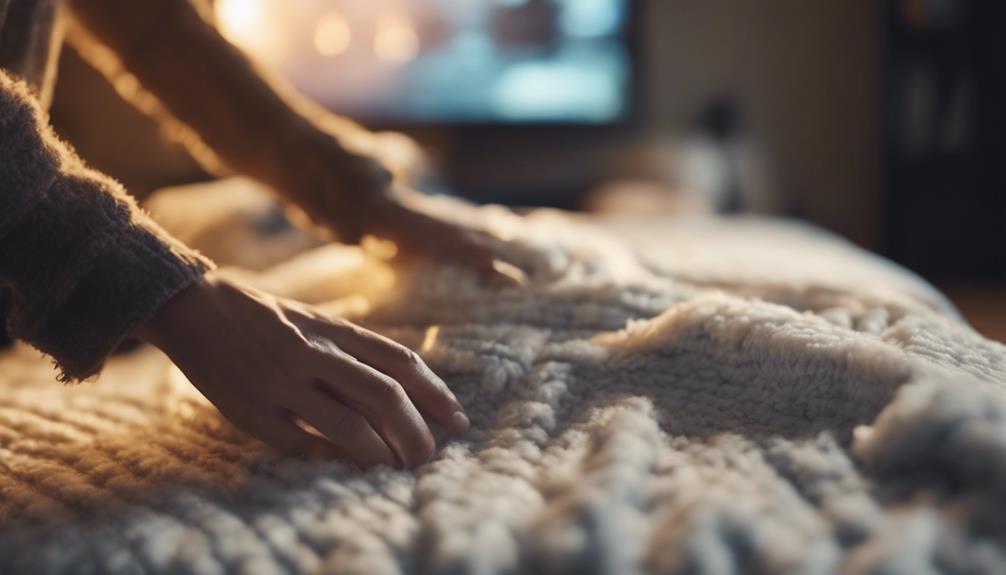
How can we guarantee the safety of using electric throw blankets in our homes?
To secure safety when using electric throw blankets, it's important to follow the manufacturer's instructions and safety guidelines diligently.
Always check for safety certifications on electric throw blankets to confirm they meet recognized standards.
Avoid folding or bunching up the blankets to prevent overheating and potential fire hazards.
Remember to turn off electric throw blankets when not in use to reduce the risks of overheating or damage.
Regularly inspect the blankets for any signs of wear, damage, or malfunction to maintain safety standards.
Testing and Inspecting Electric Throw Blankets
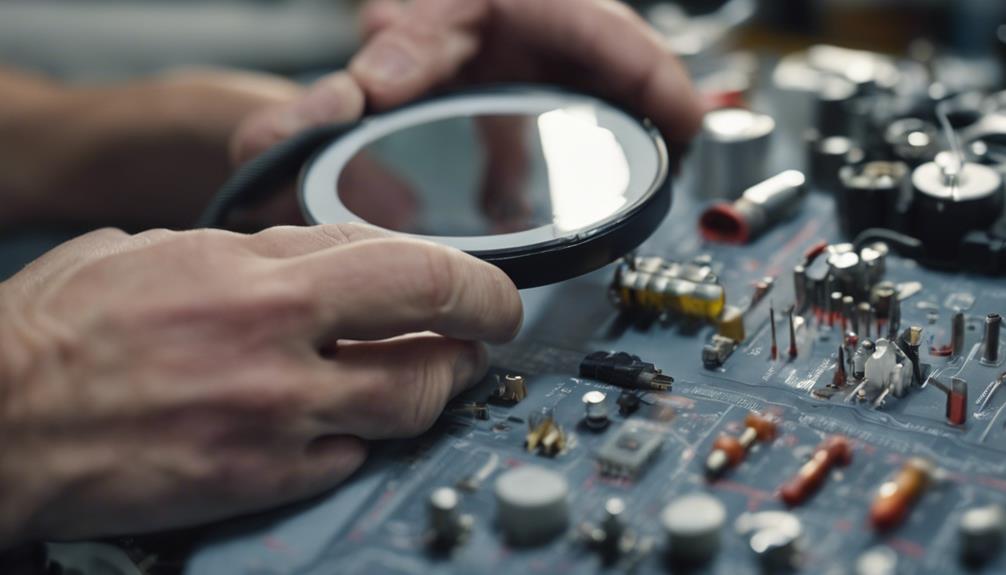
When it comes to electric throw blankets, safety checks and quality assurance are vital.
Inspecting the wiring, heating elements, and control unit for any issues is a necessity before using these blankets.
Testing temperature settings and looking out for fraying wires guarantees a safe and cozy experience.
Safety Checks
To guarantee the safety and reliability of electric throw blankets, it is important to look for safety certifications from reputable testing agencies such as Underwriters Laboratories (UL). Before using an electric throw blanket, inspect it for any signs of wear, fraying, or exposed wires. Test the temperature settings and heating elements to make sure they are functioning properly. It is essential to avoid using blankets that have damage or malfunctioning parts to prevent potential hazards. Always follow the manufacturer's instructions for correct usage, maintenance, and storage of electric throw blankets to ensure safety.
| Safety Checks | Recommendations |
|---|---|
| Safety Certifications | Look for UL certification |
| Signs of Wear | Inspect for fraying or exposed wires |
| Temperature Settings | Test for proper functionality |
| Malfunctioning Parts | Avoid using damaged blankets |
Quality Assurance
After guaranteeing the safety of electric throw blankets through proper inspections and checks, the next step involves testing and inspecting the blankets to ensure their quality. Look for electric throw blankets that have been tested and approved by recognized agencies like Underwriters Laboratories (UL) to verify safety compliance.
Inspect the blanket for any signs of wear, frayed wires, or damaged heating elements before use to prevent potential hazards. Make sure that the electric throw blanket includes temperature control features to prevent overheating and ensure safe use. Check for safety certifications on the product label to confirm compliance with industry standards for electrical safety.
Follow the manufacturer's instructions for proper use and maintenance to prolong the lifespan of the blanket and ensure safety.
Maintenance Tips for Electric Throw Blankets
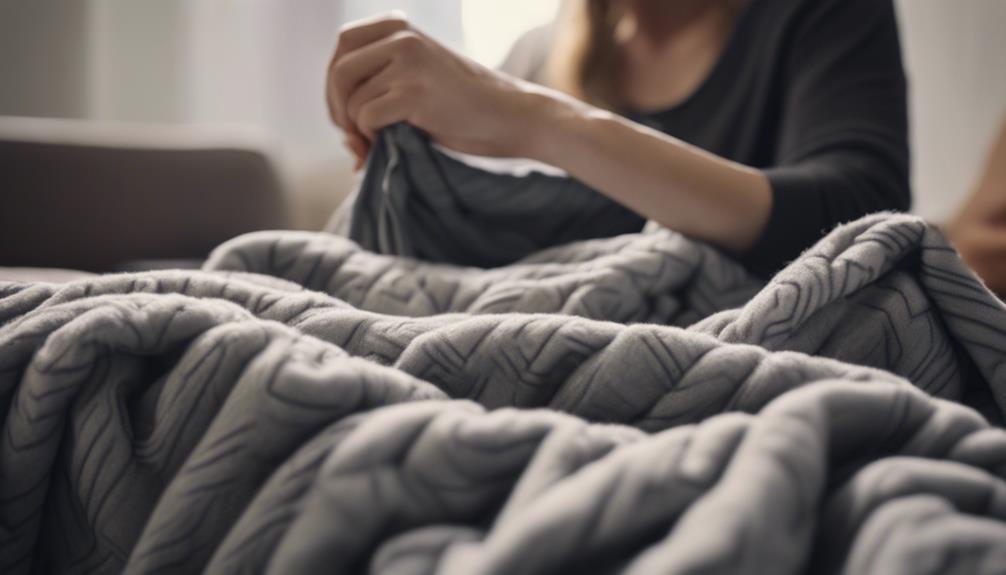
Regularly checking electric throw blankets for fraying wires or damage is vital to guarantee safe and efficient use. Following the manufacturer's instructions for cleaning and maintenance can greatly prolong the lifespan of the blanket.
It's important to store electric throw blankets in a dry and cool location to prevent overheating or damage. Avoid tightly folding the blankets to prevent wire damage and maintain safety standards. Remember to unplug the electric throw blanket when not in use to prevent any potential hazards or accidents.
Safety Comparisons With Other Heating Options
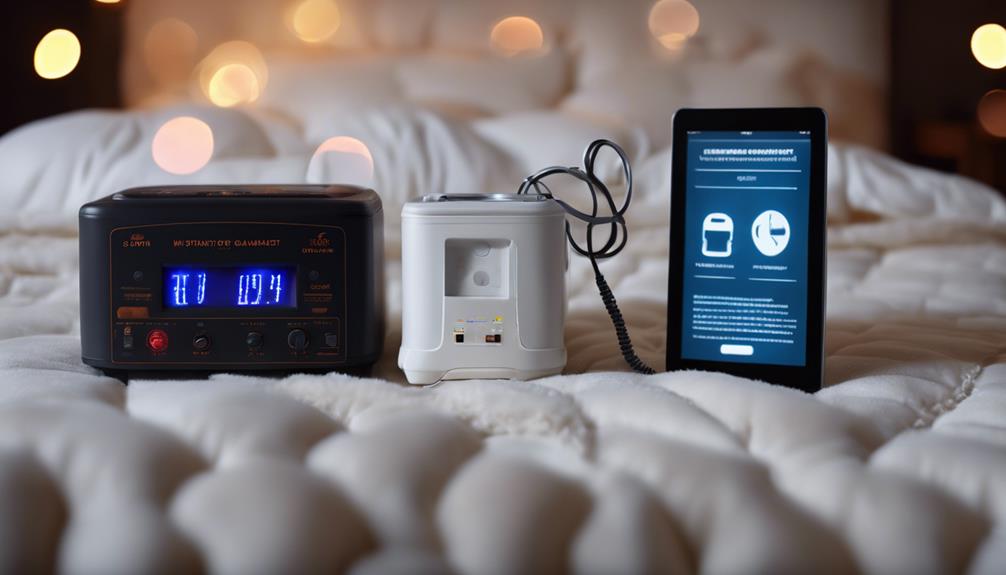
When comparing safety features, electric throw blankets pose different risks than other heating options such as heating pads and heated mattress pads. Heating pads offer localized heat therapy with fewer safety risks compared to electric throw blankets. On the other hand, heated mattress pads provide full-body warmth with temperature controls and automatic shut-off switches, enhancing safety measures. Evaluating the safety risks of each heating option is important before deciding on the best one for your needs. Proper use of heating pads is essential to prevent burns or overheating, making them a safer alternative to electric throw blankets.
| Heating Options | Safety Features | Risks |
|---|---|---|
| Heating Pads | Localized heat therapy | Fewer safety risks |
| Electric Throw Blankets | Automatic shut-off switches | Overheating, burn risks |
| Heated Mattress Pads | Temperature controls, automatic shut-off switches | Reduced risks compared to electric throw blankets |
Electric Throw Blanket Safety for Different Users

For users with specific health conditions like diabetes or neuropathy, consulting their healthcare provider before using electric throw blankets is vital. These individuals may have heightened sensitivity to temperature changes or skin issues that could be exacerbated by the use of electric throw blankets.
Older adults, on the other hand, can safely enjoy the comfort of electric throw blankets by making sure they select newer models that meet current safety standards. It's essential for all users to adhere to safety guidelines and manufacturer instructions when using electric throw blankets to prevent overheating and ensure proper use.
Keeping the temperature at a comfortable level is key to enjoying the benefits of an electric throw blanket without any risks. By following these precautions and recommendations, users with different health conditions and varying needs can safely incorporate electric throw blankets into their daily routines.
Frequently Asked Questions
Is It Safe to Sleep on an Electric Throw Blanket?
Sleeping on an electric throw blanket is generally safe when following guidelines. Properly maintained blankets with safety features pose minimal risks. Avoid bunching or folding them to prevent overheating. Individuals with diabetes, infants, children, or paralysis should be cautious.
Always turn off the blanket before sleeping for safety. With care, electric throw blankets can provide warmth without significant risks during sleep.
Are Heated Throws Safe?
Heated throws are generally safe when used according to instructions and have necessary safety certifications. It's important to avoid using damaged or old blankets to prevent hazards.
Following safety guidelines can help prevent overheating and minimize burn risks. Remember to unplug the heated throw when not in use to prevent electrical issues.
It's vital to prioritize safety and proper usage when using heated throw blankets.
What Is the Difference Between an Electric Blanket and an Electric Throw Blanket?
Electric throw blankets differ from standard electric blankets in size and purpose. They're smaller, designed for individual use or to target specific areas for warmth.
With lower voltage and wattage, they're versatile for couches, chairs, or beds. These blankets provide localized heating, perfect for snuggling or relaxing.
Their convenience and comfort make them a popular choice for adding warmth to any space.
Do Heated Throw Blankets Use a Lot of Electricity?
Heated throw blankets typically consume 200-400 watts of electricity. Using one for 8 hours costs about 10-20 cents.
Modern models have energy-efficient features, and lower voltage options exist to reduce energy usage.
Choosing a quality blanket with energy-saving settings can minimize electricity consumption.
Are Electric Throw Blankets Allowed on Airplanes?
Yes, taking a throw blanket on a plane is allowed. Electric throw blankets are also permitted on airplanes, as long as they meet the airline’s safety regulations. It’s a great way to stay warm and cozy during your flight, especially on long journeys. Just be sure to follow the rules and enjoy the comfort.
Conclusion
To sum up, when it comes to electric throw blankets, safety should always be a top priority. Remember to follow usage guidelines, take necessary precautions, and regularly test and inspect your blanket.
By maintaining proper maintenance and comparing safety features with other heating options, you can guarantee a cozy and secure experience. Stay warm and worry-free with these simple safety tips in mind!

